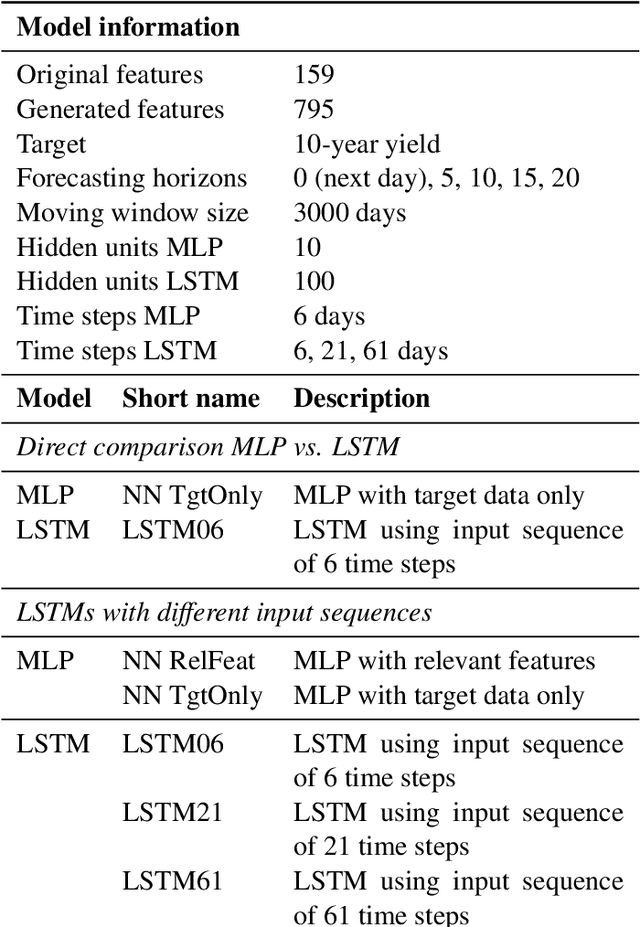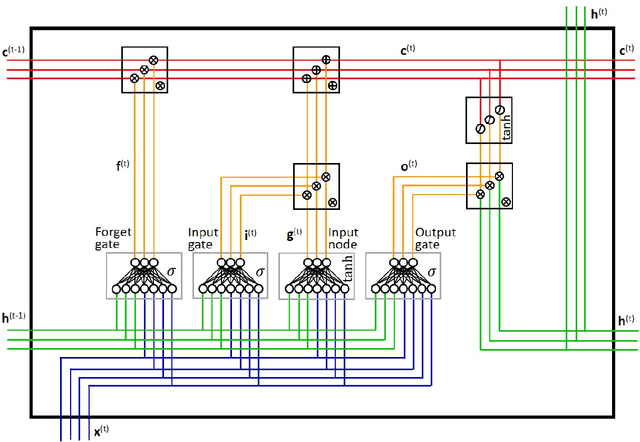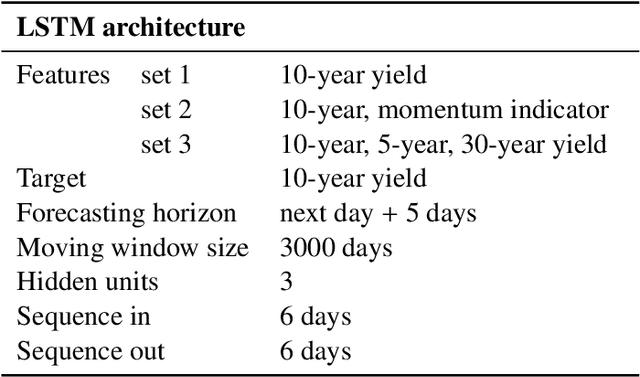Manuel Nunes
Long short-term memory networks and laglasso for bond yield forecasting: Peeping inside the black box
May 05, 2020



Abstract:Modern decision-making in fixed income asset management benefits from intelligent systems, which involve the use of state-of-the-art machine learning models and appropriate methodologies. We conduct the first study of bond yield forecasting using long short-term memory (LSTM) networks, validating its potential and identifying its memory advantage. Specifically, we model the 10-year bond yield using univariate LSTMs with three input sequences and five forecasting horizons. We compare those with multilayer perceptrons (MLP), univariate and with the most relevant features. To demystify the notion of black box associated with LSTMs, we conduct the first internal study of the model. To this end, we calculate the LSTM signals through time, at selected locations in the memory cell, using sequence-to-sequence architectures, uni and multivariate. We then proceed to explain the states' signals using exogenous information, for what we develop the LSTM-LagLasso methodology. The results show that the univariate LSTM model with additional memory is capable of achieving similar results as the multivariate MLP using macroeconomic and market information. Furthermore, shorter forecasting horizons require smaller input sequences and vice-versa. The most remarkable property found consistently in the LSTM signals, is the activation/deactivation of units through time, and the specialisation of units by yield range or feature. Those signals are complex but can be explained by exogenous variables. Additionally, some of the relevant features identified via LSTM-LagLasso are not commonly used in forecasting models. In conclusion, our work validates the potential of LSTMs and methodologies for bonds, providing additional tools for financial practitioners.
 Add to Chrome
Add to Chrome Add to Firefox
Add to Firefox Add to Edge
Add to Edge